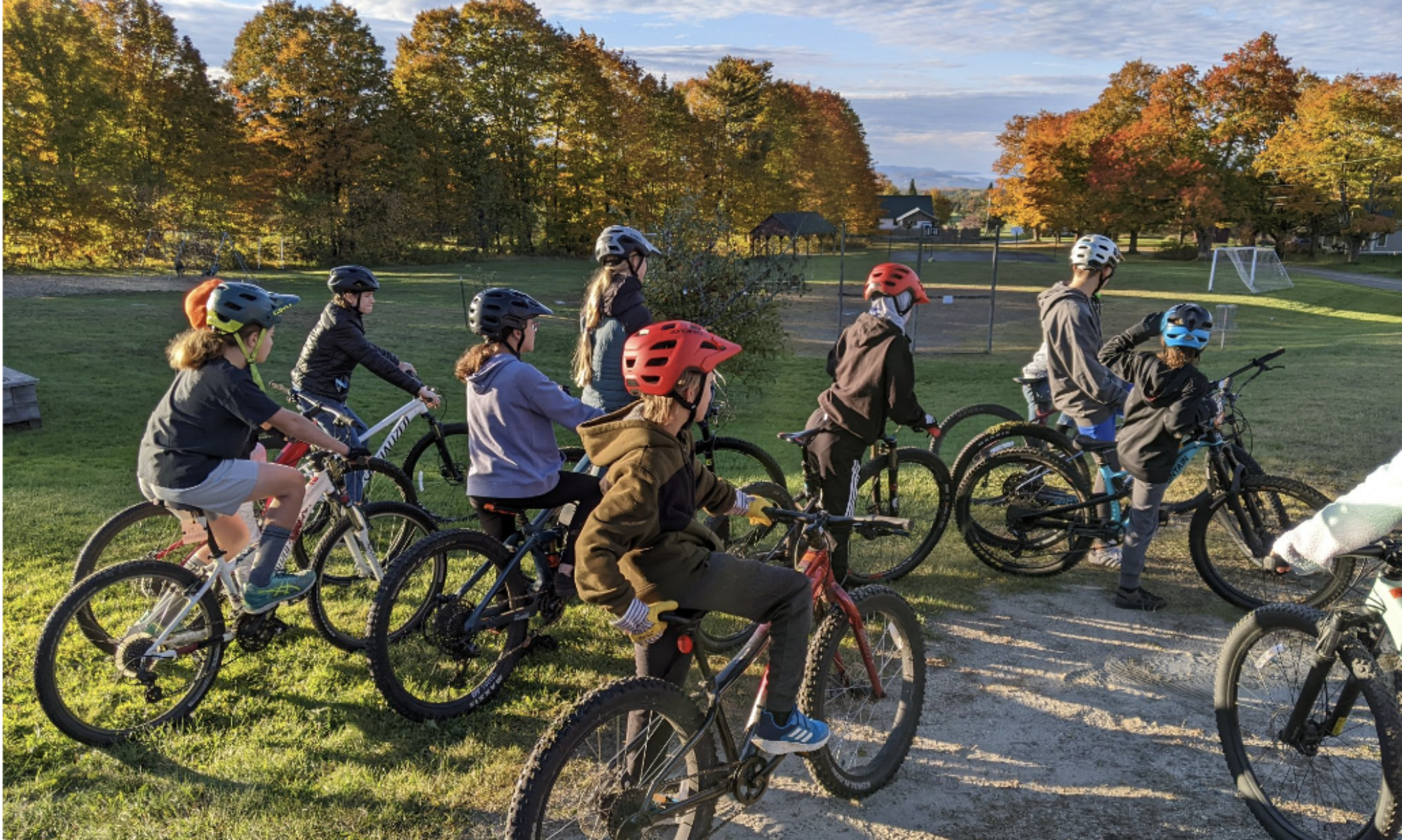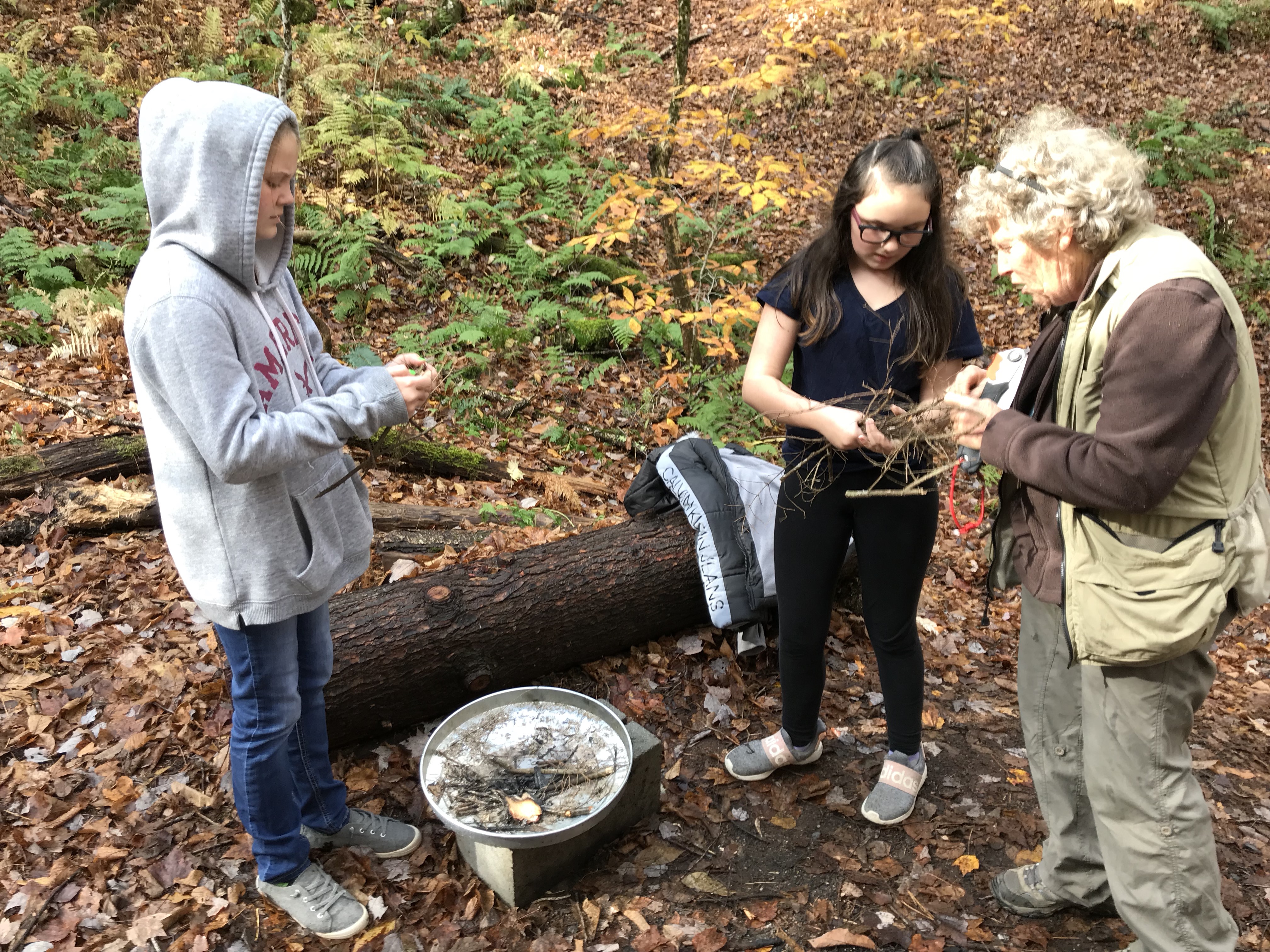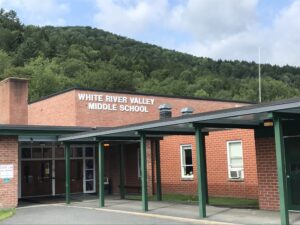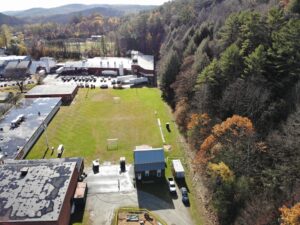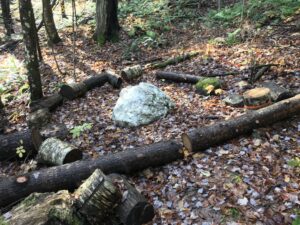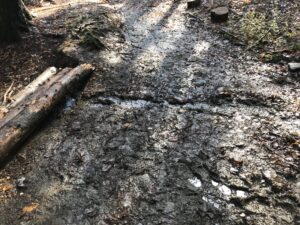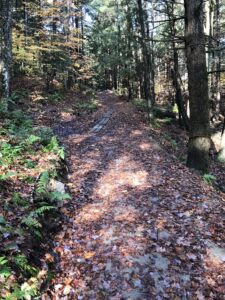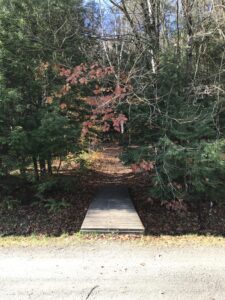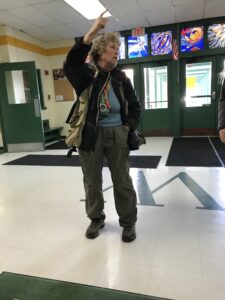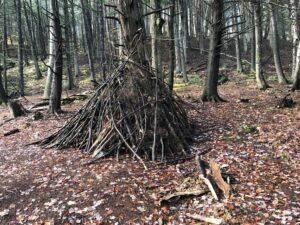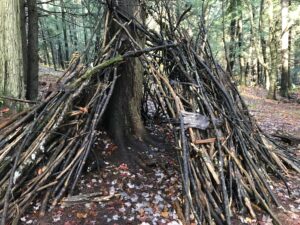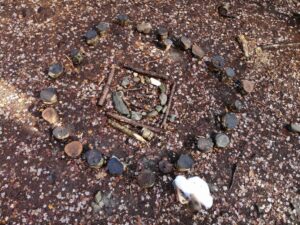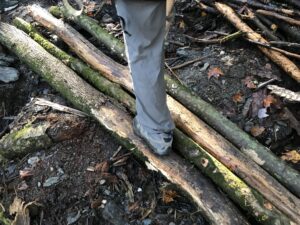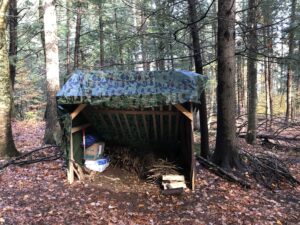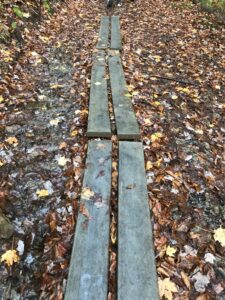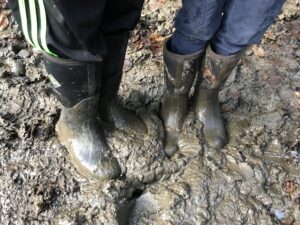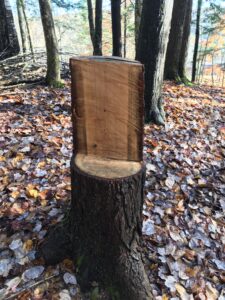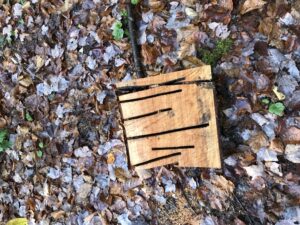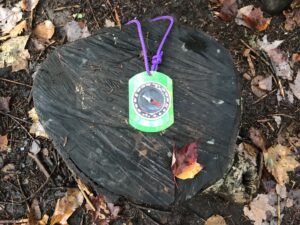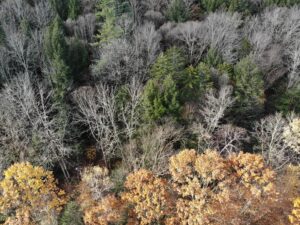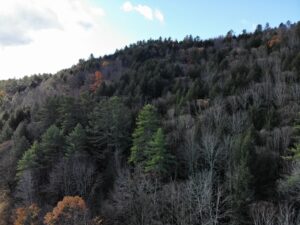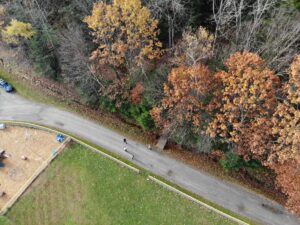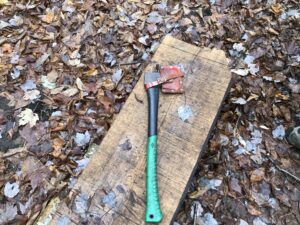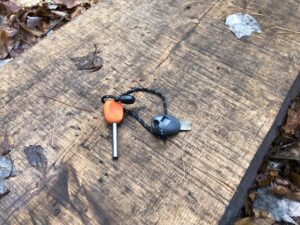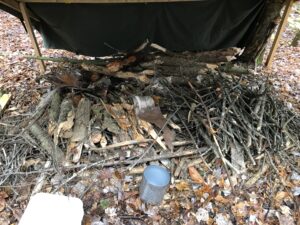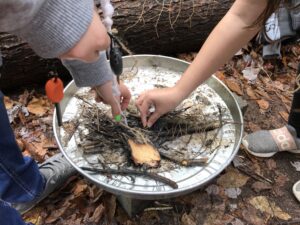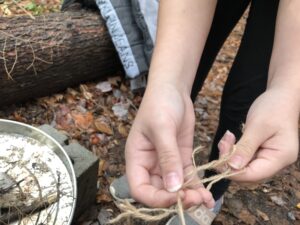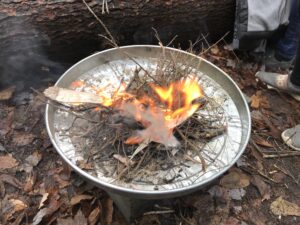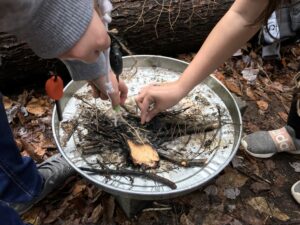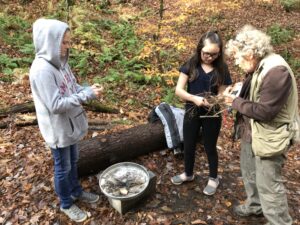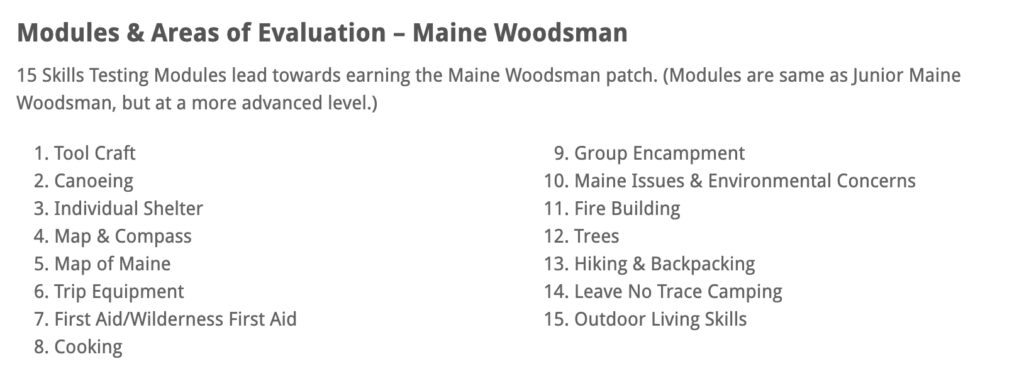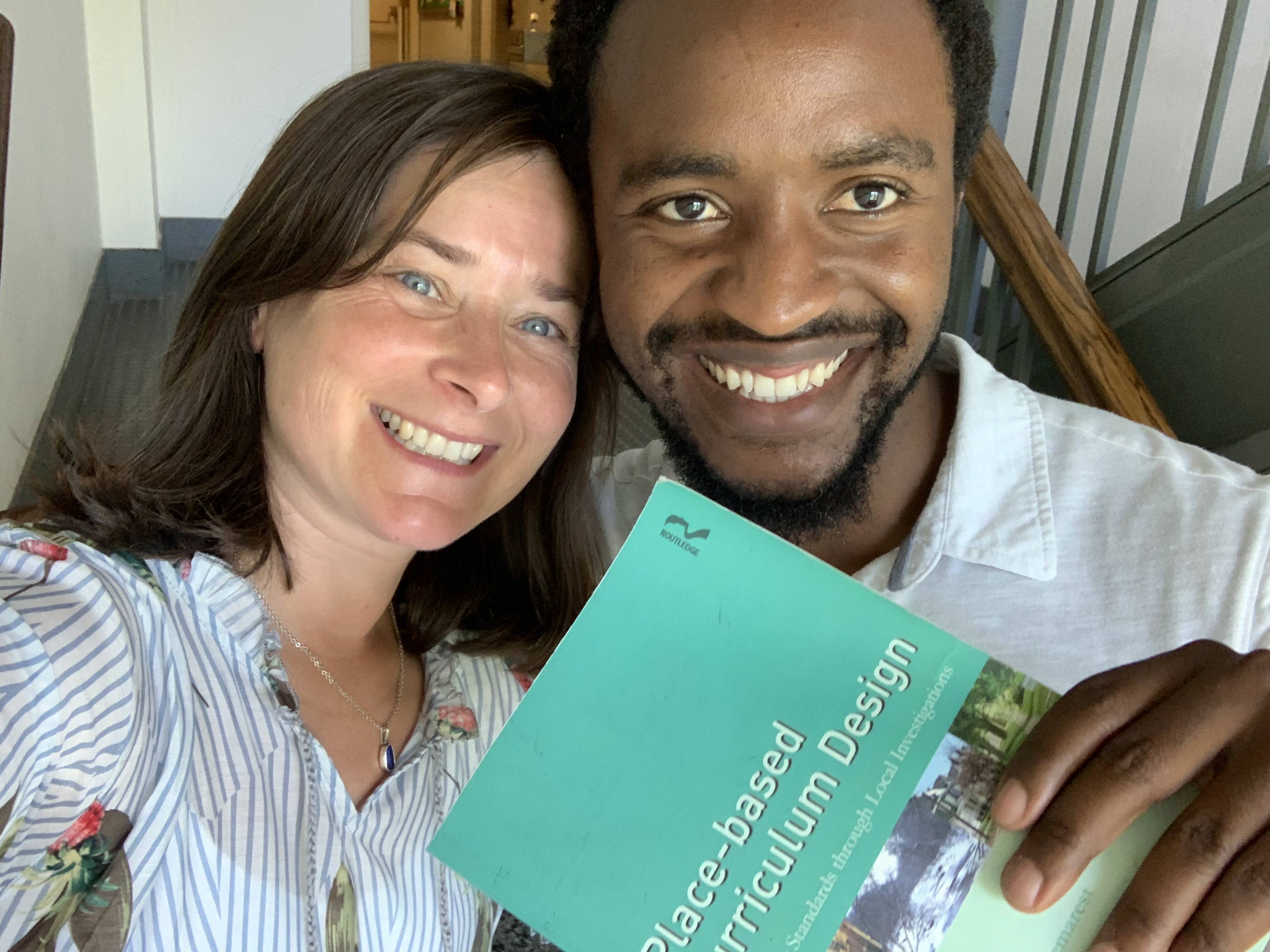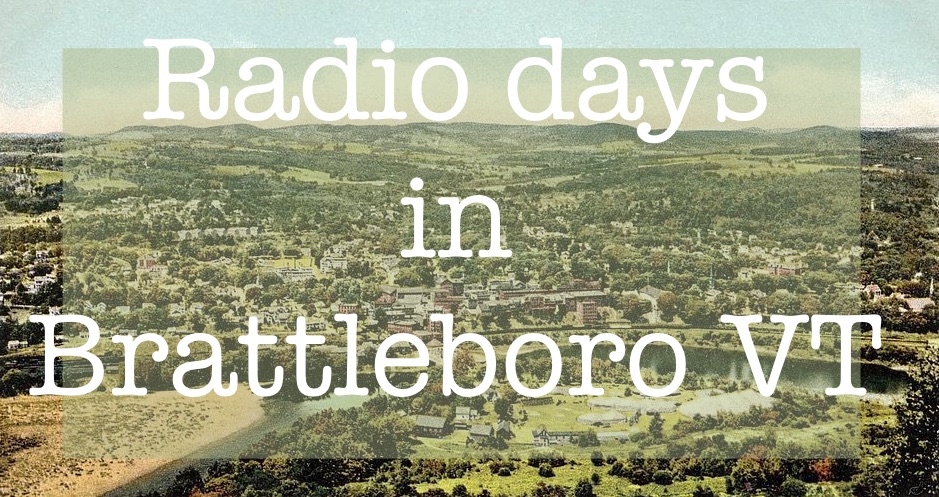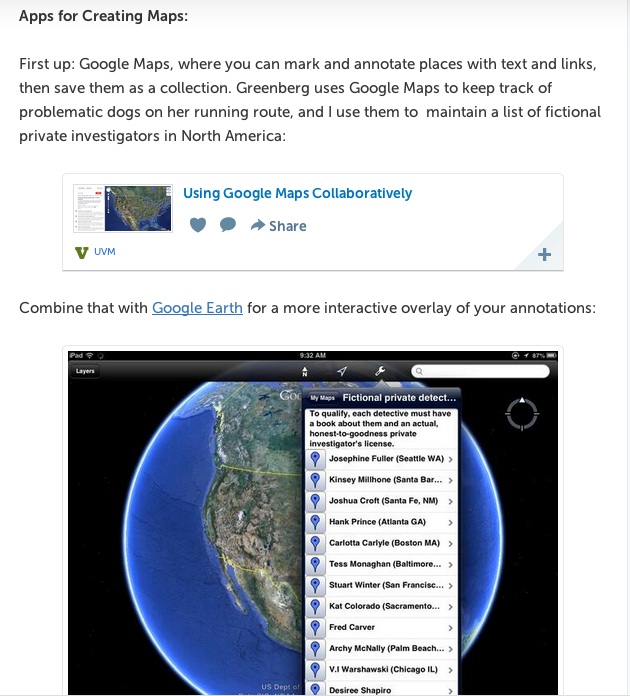Welcome to White River Valley’s outdoor classroom
Students and faculty at Bethel Elementary and White River Valley Middle Schools firmly believe middle school is not a building. Behind the brick-and-mortar school lies an expansive wilderness classroom that provides opportunities for pre-kindergarten through eight grade to connect with the earth, environment, and each other to become lifelong stewards. And I got to see it all in action.
First visit: “Into the woods! (and home before–)”
I met a group of excited students gathered in the lobby, eagerly awaiting their woods break. Bonna Wieler, outdoor education educator, arrived to hand out compasses. A quick orienteering review in the lobby and off we went.
Bethel had significant rains the day before I arrived so the trail was, let’s say a little muddy. But students had already built a few bridges and worked on some erosion control in the previous days. The slick trail did not slow down anyone. With mud boots on, students sprinted effortlessly up the trail.
Our first stop? One of the campus campsites.
A shelter made of sticks and tarps stood prominently in an opening in the thick pine forest. “We built that!” yelled a student, pointing proudly.
Do you know where you are?
WRVMS students are mapping the boundaries and trails using emerging orienteering skills. And that was part of the task for today. “260 degrees, 31 paces,” shouted one student. Bonna nodded an acknowledgement, jotting the data in a notebook.
Two students became my guides. They named every type of tree by their bark alone, as the leaves are a bit scarce this time of year. They showed me all the benches students had made with hand tools out of downed logs. It seemed they knew every square inch of that space like the backs of their hands. But most noteworthy was the students’ ability to share their knowledge with confidence. I consider myself something of an outdoor enthusiast [Ed Note: Scott is, no lie, a competitive whitewater kayaker] but I could not compete with this group.
Second visit: Let there be… FIRE.
My second trip up the trail? This new group of students had a very different focus. We were there to kindle fires. Students carefully carried axes and fire-starting materials through the coolness of the morning and into the dense forest. A small shelter held dry firewood organized by size. The students had been gathering materials for days. The group all had their assignments. “We’re building the fire,” said one student, pointing. “I’ll cut wood, you crack acorns.” Over by the fire, two students were organizing their materials with surgical precision. “When it lights,” said one, pulling her hair into a ponytail, “we need to be ready.”
Fire n’ Fluff
When I heard “fluff” I thought “marshmallow sandwiches”, but I admit I was hungry. Fluff, is when you take tiny strands of twine and pull them apart. Then strips of birch bark. Followed by mouse tails. Not real ones, just tiny sticks that look like tails.
A pair of girls made a bird nest of materials. Then they grabbed the flint and striker. A few strikes later and boom: fire time. “WE DID IT!” shouted the students. Fist bumps all round. And I was impressed!
Much of the curriculum for these activities have been adopted from similar programs in Maine.
What contributes to the success?
Not many great things happen in isolation or by accident.
First, as mentioned earlier, the elementary school has a strong outdoor program starting in kindergarten. Kindergarten in the woods. Bethel has been using the natural environment as an extension of the school for several years. Educating Children Outdoors or E.C.O has been part of the school as well. Here’s their letter to parents. The school also partners with the North Branch Nature Center to provide training and support.
Additionally, as we all know local partnerships are essential to the health and sustainability of any programs, Bethel partners with Project Learning Tree and the Four Winds Nature Institute.
A second factor in the success of this program is highly qualified and passionate educators. Bonna Wieler and Melissa Purdy are two such shining examples. Their experience, training, guidance and leadership are essential. Many other educators in the school have participated and have been trained as well. Trained staff is a key to sustainability.
Lastly, what happens in the woods in not in isolation to the classrooms or curriculum.
“It’s where we bring the indoor subjects into the outdoors,” says Melissa. The programs work symbiotically with benefits happening in both places. For example, Lindley (Design and Technology Educator) and Bonna also have a vision of using the resources/wood from the forests to make products in the WRVMS Shop. Keep it local!
What’s the purpose?
For a full version of the desired outcomes please see here
We will:
- Increase confidence and self esteem
- Build empathy and resilience
- Connect with student’s need for movement
- Reduce stress
- Be an extension of the classroom
- Promote creativity and imagination
- Play
- Teach about the natural world and understanding the science involved – the way to grow good stewards of the earth, to develop attitudes and skills to preserve and care for the environment.
- Help students gain the knowledge, skills, understanding and experience necessary to make informed decisions about our environment.
- Facilitate connections with elders in our communities to enhance student learning and enrich elders’ lives as they share their knowledge and caring of the Upper Valley, passing on their experiences and expertise.
- Model and teach the protection, restoration, sustainability and stewardship of the natural systems within our communities.
Other benefits:
- Benefits to Mind, Body, and Spirit: Dirt improves health and happiness – The Nation Wildlife Federation
- 5 Way’s Nature Boosts Happiness, according to science – Treehugger
- How Nature Can Make You Kinder, Happier, and More Creative – Greater Good Science Center at UC Berkeley
Here’s what students have to say as just one more testament:
“When I’m outside I feel alive”
“The outdoor setting gives me a space to breathe and just be me”
“This is where I feel I’m at my best”
“My family history goes back generations, so it is important for me to protect this for future generations”
